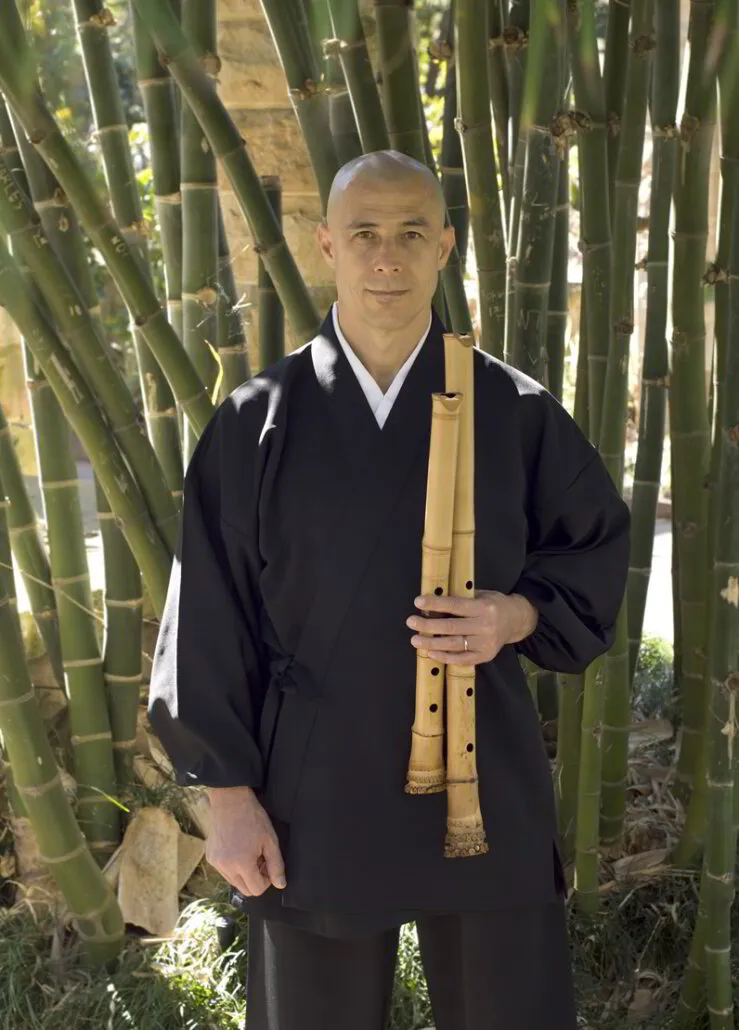The Shakuhachi
The Shakuhachi
Every shakuhachi begins as a stalk of yellow-green bamboo swaying in the wind. The bamboo used to make the shakuhachi is a very common species called madake, which means ‘true bamboo’ in Japanese. This type of bamboo often grows in large groves that may cover many acres. One grove may contain hundreds, or even thousands of other stalks, nearly all of which are as tall as a six storey building. The entire grove is a single living creature. Though each stalk (called culms) has its own clump of roots, all culms in a grove are connected by a fantastic network of runner roots. Every culm contributes nourishment to the entire grove.
Master craftsmen are still the only source of quality instruments. Because each piece of bamboo is unique in dimensions, density and bore, getting a shakuhachi to play well is mostly an intuitive process. Shakuhachi makers will frequently refer to their best instruments as ‘accidents’.
The shakuhachi is a very simple instrument. It has no keys or pads like those on a western flute. There is no reed, like on a clarinet or saxophone, and no strings like on a guitar or violin. It doesn’t even have a mouthpiece like the recorder. There are no mechanisms inside it that make the sound, like those inside a piano or organ.
With only five finger holes, (four in the front of the flute and one in the back for a thumb), it has less finger holes than almost any other common wind instrument, including the penny whistle. Yet despite its simple construction, the shakuhachi in the hands of a master can produce an unbelievable wide range of sounds. It can be as expressive as the human voice.
The shakuhachi was first introduced into Japan from China in the eighth century. It has been used in a spiritual context since the 15th century or earlier. In the Edo period (1600-1868), playing the shakuhachi was the primary meditative practice of a sect of Zen Buddhist monks, who called themselves komusô (‘priests of nothingness’).
For these Zen monks, the shakuhachi was a spiritual tool, not a musical instrument. They also knew that the act of playing the shakuhachi relaxed the mind and body in many ways, and subsequently aided their meditation and contemplation. The wisdom of the ‘priests of nothingness’ has been transmitted to today’s shakuhachi players through their repertoire of sacred pieces (honkyoku).

